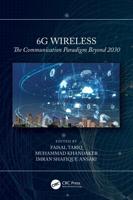Publisher's Synopsis
An important part of the homeland security enterprise is the ability of public officials and leaders to communicate effectively with the public. When a crisis strikes, the public's ability to understand and act upon messages provided by officials is often significantly impinged by anxiety, fear, worry and distrust. In these uncertain and traumatic times, the public looks for a trusted voice and steady leadership. The ability to be trusted and lead during a crisis is determined, largely, by how well an official communicates with those affected. This book examines the public information methods used by officials in two high-profile criminal cases that unfolded before live television news cameras over the course of several days in 2013-the Boston Marathon bombings and the nine-day manhunt for former Los Angeles Police Department Officer Christopher Dorner in the greater southern California area. Best practices in risk and crisis communication are identified through a review of the literature and are used as the basis for analyzing each case study. The findings lead to four key crisis communication recommendations for public officials: recognizing the importance of empathy and compassion in trust building, focusing specifically on crisis communication best practices for leadership, emphasizing the importance of building pre-event partnerships, and differentiating the tactics from the strategic.










